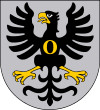

Poland/Krakow/Oświęcim (Auschwitz I) Part 19
Nurettin Yilmaz
- OŚWIĘCIM. PRACODAWCY PRZEDSTAWILI OFERTY PRACY DLA OBYWATELI UKRAINY
- SPOTKANIE INFORMACYJNE DLA OSÓB Z UKRAINY DOTYCZĄCE MOŻLIWOŚCI PODJĘCIA PRACY
- Oświęcim. W tunelach pod zamkiem powstanie interaktywna trasa zwiedzania
- Oświęcim. Rekordowe zainteresowanie dofinansowaniem do wymiany pieców. Na ten...
- Oświęcim. Absolutorium za 2018 rok
- Oświęcim. Uwaga! Wysokie stężenie ozonu w powietrzu w Małopolsce Zachodniej
- Oświęcim. Ogólnopolski Spływ Kajakowy " Trzech Zapór" połączony z akcją...
- Oświęcim. Zakończyła się termomodernizacja siedmiu budynków miejskich. Są...
- Oświęcim. OSP Oświęcim będzie mieć nowy wóz bojowy
- Ogłoszenie o wyłożeniu do publicznego wglądu projektu miejscowego planu...

- "Kęt-Rol" Spółdzielnia Usług i Produkcji. Punkt Mechanizacyjny
- "Kora" Firma. Sajdak Michalina
- Kiosk Ogólnospożywczy. Gaszczyk Barbara
- Liga Obrony Kraju Rejonowy Ośrodek Szkolenia Działalności Gospodarczej. Ośrodek Szkolenia Kierowców
- "Komet" Firma Produkcyjno-Handlowo-Usługowa. Kołodziej Tadeusz
- "Lewimar" Firma Handlowo-Usługowa. Jasek Wiesława
- "Leśna" Hurtownia Kosmetyków
- Klasztor s. Serafitki
- Kościelniak" Producent Blach Dachowych S.j.
- Kantor Wymiany Walut. Płonka Marek
- "Kingstone" Sp. z o.o. - Dzierżawcy
- Kotłownia Międzyzakładowej Spółdzielni Mieszkaniowej BUDOWLANKA


 |
Powiat oświęcimski - powiat w województwie małopolskim z siedzibą w Oświęcimiu. Należy do niego gmina miejska Oświęcim; gminy miejsko-wiejskie: Brzeszcze, Chełmek, Kęty, Zator; gminy wiejskie: Osiek, Oświęcim, Polanka Wielka, Przeciszów. Powiat powstał wskutek reformy administracyjnej, która miała miejsce w 1999 roku. Powiat oświęcimski to nie tylko obóz zagłady Auschwitz. Okazuje się, że oprócz Państwowego Muzeum Auschwitz-Birkenau na terenie powiatu znajduje się wiele innych ciekawych miejsc. Zabytkowy zamek – pałac i ratusz w gminie Zator, kościół p.w. św. Marcina w Jawiszowicach czy pałac Radziwiłłów w Grojcu, to tylko niektóre z nich. Pasjonaci pszczelarstwa powinni także zajrzeć do pasieki i pszczelarskiego skansenu w Grojcu. Zgromadzono w nim zabytkowe ule i sprzęt do pozyskiwania miodu z różnych regionów Polski. Przyciąga również piękno natury, które można podziwiać, wybierając się na jedną z trzech tras rowerowych. |


